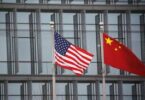STEFAN LEHNE
The Russian invasion of Ukraine has pushed the EU into a new era. The union responded to Russian aggression with a coherence and determination rarely seen before. Together with the United States, the EU launched a barrage of sanctions that is having a devastating impact on the Russian economy. It mobilized enormous additional funding for Ukraine. Even more dramatically, for the first time ever, the EU delivered weapons to a country under attack. And the EU countries opened their borders to the huge wave of refugees, overcoming their long-standing divisions in this area.
EU High Representative for Foreign Affairs and Security Policy Josep Borrell has celebrated the EU’s response as the “birth of a geopolitical Europe.” But while the EU did in this case demonstrate its capacity to rise to an exceptional challenge, it is only entering an era that will present many grave threats requiring tough choices and determined action. It would be foolish to rely on ad hoc mobilization at every such turn. Rather, the EU should develop its instruments to allow it to become more effective in a sustainable manner.
The current foreign policy arrangements, which were developed in a more benign international environment, suffer from a number of structural problems. Decisionmaking on the basis of unanimity among twenty-seven diverse countries represents an obvious constraint that often involves delays and sometimes blockages. The division of roles between the various institutional players—such as the European Council, European Commission, and European External Action Service (EEAS)—is not well defined, and their leaders often compete rather than operating as a coherent team. And the member states, which run their own national foreign policies in parallel to the common one, often show insufficient commitment to joint action on the European level.
The following three reforms could help address these deficits.
DECISIONMAKING BY QUALIFIED MAJORITY VOTE
The debate about qualified majority voting is as old as the EU’s Common Foreign and Security Policy itself. From the beginning, it was evident that the need to achieve unanimity within a large group of countries would constitute a serious handicap in responding to international challenges. Over the last decades, many other policy areas—some of them no less sensitive than foreign policy—have become subject to majority voting. But on foreign policy, despite numerous initiatives in this direction, no breakthrough could be achieved.
The member states favoring such a reform did not push hard enough, and a number of smaller countries resisted, as they feared that their particular national interests could not be protected without a veto. Also among the skeptics are prominent EU figures, including European Council President Charles Michel, who argued that while unanimity “slows down and sometimes even prevents decision-making,” it also forces the EU to work relentlessly to achieve unity, which constitutes the EU’s real strength. But as the international situation deteriorates, the trade-off between the ideal of unity and the high cost of unanimity in terms of effectiveness is seen more critically. Recently, calls for moving toward majority voting have become more urgent, particularly during the current conference on the future of Europe. But it is uncertain whether the views of the reluctant governments have evolved.
The shock of the Ukraine war, however, should finally allow real progress on this issue. Of course, some will argue that in this case the EU proved capable of acting swiftly and decisively even without majority voting. But this was a truly exceptional situation in which two external actors played a major role in bringing the twenty-seven EU members together. One was Russian President Vladimir Putin, whose unprovoked and inexcusable aggression antagonized even the most Russia-friendly EU governments. The other was U.S. President Joe Biden’s administration, whose energetic leadership ensured a well-coordinated Western response.
Without this exceptional constellation of external forces, the EU’s coherence is not in great shape. As the record of recent years shows, divisions resulting from internal crises and the rise of powerful external actors have led to more and more cases in which individual governments blocked EU positions and actions. If, in the light of the deteriorating international environment, member states accept the need for a stronger European foreign policy, then moving toward a more effective method of decisionmaking appears a logical step. Ideally this could be done for all aspects of foreign policy, with the exception of decisions with military implications, for which the EU treaty rules out majority voting. A gradual phasing in of majority voting, beginning with less controversial topics, would certainly be preferable to no progress at all.
Introducing majority voting could be achieved without treaty change. Article 31/3 of the EU Treaty allows this on the basis of a decision of the European Council. The treaty already offers ways to mitigate the concerns of governments that have been reluctant so far. The option of “constructive abstention”—recently used by Austria, Ireland, and Malta in the case of weapons deliveries to Ukraine—allows countries to be excepted from implementing a particular decision. It offers a promising way of avoiding blockages, a way that should be employed more often in the future. There is also the emergency brake of pushing a decision to the European Council, if a country determines that “vital and stated reasons of national policy” are at stake.
The introduction of majority voting would not revolutionize the functioning of the council. Just like in other areas of EU policy, the priority will always be to act on the basis of unanimity. Actual voting will be the rare exception. However, the option of resorting to a vote would make it more likely that unanimity is achieved without too much delay—and less likely that the substance of decisions is diluted to the point of the lowest common denominator of national positions. Majority voting would help, but it should not be regarded as a panacea that will overcome all the deficiencies of the EU’s work on foreign policy. It needs to be accompanied by a reform of the relevant institutional arrangements.
STREAMLINING THE INSTITUTIONAL INFRASTRUCTURE
The idea of setting up the EEAS as a support structure for the high representative emerged in the European Convention (2002–2004) and was later included in the Lisbon Treaty. At the time, several states still held the view that the commission must be kept at a safe distance from security and defense issues. However, the EU also did not wish to create a fully fledged EU foreign ministry as a separate institution. Consequently, the EEAS was established as a hybrid entity between the commission and the council, heavily dependent on the former in terms of budget and procedures and with uncertain ownership from the latter.
During the eleven years of its existence, the EEAS has made considerable progress. In particular, the EU delegations have taken over the foreign policy functions from the rotating presidency and thus enhanced the EU’s face and voice in third countries. Also, the EEAS has managed to some extent to bridge the gap between classical foreign policy and the external policies led by the commission. However, the EEAS has never overcome its structural defects. It has neither the necessary authority to coordinate effectively between the commission and the member states nor the clout to drive the policy process in the council. With few exceptions, it has resigned itself to the role of a secretariat of the EU foreign policy machine.
Reallocating the major part of the resources of the EEAS to the commission and using a smaller part to support the European Council’s foreign policy work would streamline the overly complex institutional landscape, eliminate parallel structures, and strengthen the capacity of the main players.
The taboo of the commission on getting involved in defense has long disappeared. Since 2021, the commission has had a Directorate-General for Defence Industry and Space, which implements the EU defense fund. Also, European Commission President Ursula von der Leyen claims to lead a “geopolitical commission” and seeks a more active foreign policy profile for herself and her institution than her predecessors sought. Particularly with regard to countries with which the EU has a strong treaty-based relationship, the commission already has a prominent foreign policy role.
More importantly, the changed international environment necessitates a thorough reevaluation of EU external relations. Many EU policies, including trade, investment, competition, and research and technology, evolved in an international climate where cooperation could usually be assumed to be a win-win situation. Now, these policies have to factor in power politics and become both tougher and more flexible. Today, the commission is leading efforts to enhance resilience by reducing asymmetric dependencies, building capacity in strategic sectors, and protecting the EU from external coercion. The need to leverage the EU’s economic strength to protect its interests has never been more important. And this requires better integration between external economic relations and foreign policy. The various instruments have to be brought together behind a coherent approach based on a strategic outlook.
This was supposed to be facilitated by having the high representative wear two hats, overseeing foreign and security policy and also serving as vice president of the commission. But in practice, the holders of this position—being partly inside and partly outside the commission—were unable to fulfill this role. Merging the major part of the EEAS, including the delegations, into the commission would enhance the commission’s capacity to integrate the various instruments more effectively.
As the EEAS is based on Article 27 of the EU Treaty, this process will take time. But through both revising the council decision on the EEAS and encouraging informal arrangements, a progressive integration could be initiated soon. The strengthened external relations arm of the commission should allow for continuing involvement of diplomats from the member states, particularly in the EU delegations. Their experience and political outlook usefully complement the expertise of commission officials.
ENHANCING THE FOREIGN POLICY CAPACITY OF THE EUROPEAN COUNCIL
Thanks to its control over the most relevant external instruments and its institutional capacity, the commission can make a crucial contribution to upgrading EU foreign policy, but a large component will remain based on intergovernmental cooperation. In this respect, the last decades have seen a significant shift of influence from the Foreign Affairs Council to the European Council. On high-profile issues, it is now almost always the European Council that makes the key decisions, whereas the Foreign Affairs Council’s role has diminished significantly.
This development mirrors changes within national governments. Several factors, including the broadening of the international agenda, the proliferation of stakeholders, and the blurring of border lines between internal and external policies, have made foreign policy today a matter for the whole government. Now, only a country’s prime minister—or, in some countries, the president—has the necessary authority to oversee both the formulation and the implementation of foreign policy. Foreign ministers still play a significant role, particularly in larger countries, but their influence mainly depends on how well they work with their bosses.
Already the Lisbon Treaty has recognized this trend by giving the European Council the operational mandate of taking “the necessary decisions” in foreign and security policy. However, the body is currently not well equipped for this task. It deals with many other matters besides foreign policy and meets only a few times a year (though it now sometimes resorts to online meetings in urgent situations). Sometimes, the European Council’s work does not seem to be well integrated with the other components of the EU’s foreign policy machinery.
With few exceptions, the prime ministers and presidents sitting in the European Council made their career in domestic politics and have only limited experience in foreign policy. They often take a short-term perspective and look at international events mainly through the prism of their national politics. This fragmented approach does not take the EU’s collective potential into account and sometimes results in a lack of ambition and excessive risk aversion.
Michel, the European Council’s president, has tried to strengthen the body’s work on foreign policy. But strategic debates on major international challenges still happen rarely and are often crowded out by other urgent business. For the most part, the European Council still approaches foreign policy in a crisis management mode. As the case of the war in Ukraine has shown, this can have impressive outcomes, but there are also many examples where the council did not rise to the challenge at hand.
There is room for improvement, particularly regarding the preparation for foreign policy debates of the European Council. This is currently handled partly by the Brussels-based ambassadors and foreign ministers at their monthly meetings and partly by the prime ministers’ closest advisers on EU matters, known as “sherpas.” The division of work between these two strands is often not clear, leading sometimes to improvisation and friction.
These problems could be remedied by setting up a stronger support structure roughly modeled on the National Security Council in Washington. This council provides a broad range of policy analysis to the president and steers interagency coordination on national security issues. In the case of the EU, such a body could be resourced with staff from the EEAS and from the relevant units of the Council Secretariat. It could be directed either directly by the president of the European Council or by the high representative working closely with the president. It would have two primary functions.
First, drawing on the resources of the entire EU system—including the EU delegations, the military and civilian operations, the EU intelligence center, the expertise in headquarters, and contributions from member states—it could provide strategic advice to the members of the European Council well in advance of a debate. Having a shared assessment and common analysis as a basis for deliberation, in addition to the national approaches, would facilitate the EU reaching substantial outcomes.
Second, the new structure should be tasked with ensuring better coordination, not just among the Brussels-based foreign policy actors but also among the member states. It represents a basic feature of the intergovernmental approach that member states run their own individual diplomacy in parallel to the EU’s common approach. This is unlikely to change soon. However, regarding topics where the EU plays an important role, there is a strong case for closer coordination. The new support structure of the European Council could be used as a clearinghouse for the top-level diplomacy of the institutions and the member states. Information would be exchanged, assessments shared, travel plans coordinated, and key messages harmonized.
Such coordination is already happening to some extent within smaller consultation groups that include just the bigger member states. The idea would be to broaden this day-to-day coordination to all twenty-seven governments and thus to foster a stronger team spirit. Much greater use should also be made of the option of mandating individual prime ministers or foreign ministers with particular diplomatic tasks on behalf of the entire EU. The smaller consultation groups that exist on many topics could be made more transparent by sharing reports or through the involvement of officials from EU institutions. Over time, the concrete, daily experience of cooperating and communicating within the framework of the European Council should help to build confidence and eventually result in greater coherence and unity.
CONCLUSION
The current EU foreign policy arrangements were developed in an environment in which the world seemed to move toward a rules-based international order and in which Europeans could rely on the benevolent hegemony of the United States. Over the past fifteen years, geopolitics has come back with a vengeance. Rather than being a tragic one-off event, the Russian invasion of Ukraine marks a particularly dramatic stage in the world’s gradual descent into relentless great power competition. And while Biden’s administration has revived a functioning transatlantic relationship after the chaotic years under his predecessor Donald Trump, it is unclear whether this will survive beyond 2024. It is therefore uncertain whether today’s fair-weather construction of EU foreign policy will be able to withstand the storms of the new era. If the EU wishes to protect its interests in the new international context, it needs something more robust and effective.
The EU’s new Strategic Compass will hopefully give a strong impetus to the development of the EU’s security and defense dimension. But a better security policy needs to go hand in hand with a more effective foreign policy. The ideas discussed above represent just some of the steps that could be taken. Better decisionmaking through majority vote in the council, an enhanced role of the commission in bringing external economic relations together with foreign policy, and an enhanced capacity for the European Council to lead the policy process could help significantly in making the EU a more resilient and capable international actor.
Courtesy: (carnegieeurope.eu)






